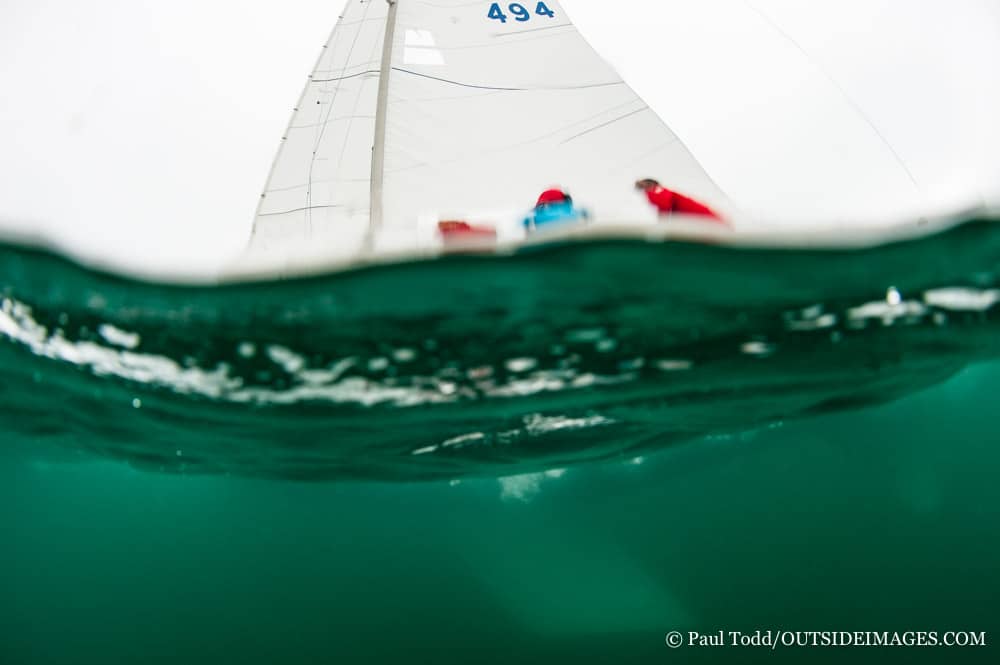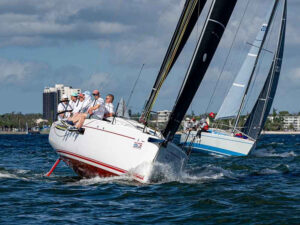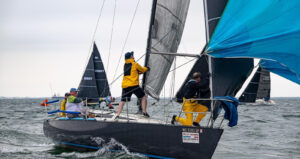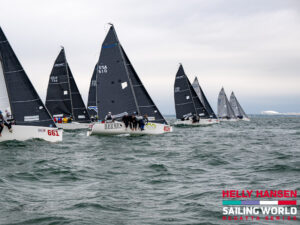While modern one-design classes come and go, the Etchells endures, aging well as the ultimate tinkerer’s keelboat. Whether you sail it simple or sail it complex, the outcome is always the same: You’re only as fast as your last adjustment.
This long, slender classic came to the stage in the late 1960s, and while its lines remain true to its namesake designer Skip Etchells, its intricacies and the experience required to sail it to its potential are ever changing and ever elusive. Great sailors have gone to great lengths to master it, only to relinquish. Even greater sailors continue to unlock its mysteries today.
Argyle Campbell, of Newport Beach, California, knows this well. His boat today has twice as many ways to alter sail shapes and change how the helm tugs gently in his hand.
“They are very hard to make go fast,” he confesses. And therein lies the obsession of he and countless others over the past half century.
There are currently three builders; Ontario Yachts in Canada, Heritage in Cowes, England, and Pacesetter, in Australia. Ontario was long the go-to builder, but Heritage won the last Worlds. “That Worlds was won by John Bertrand, and he was very good, obviously,” says Campbell who now owns a Heritage build. “He was able to get the most out of the boat and he had a great crew, but the attention to detail on this boat is incredible.”
How fast an Etchells goes upwind depends on the foils, he says. “There’s very little tolerance, but the good guys pick out the tolerances and max out the benefits. I’m not a naval architect, thought, so I couldn’t tell you to be honest.”
The combination of headstay length and mast butt location are the keys to unlocking the boat’s potential, he says. At the partners there used to be chocks, but now there’s a mast ram that’s controlled at the mainsheet console. “It allows us to make the mast fit the shape of the main. In light air it’s more ram forward, and in heavy air, it’s more ram aft. Ram aft loads the headstay and we can sheet in the jib a little bit tighter.

He describes it as a cerebral boat, which has its drawbacks: where you are in the complicated matrix of adjustments can get confusing. There are two jibs on board and each jib comes with batten choices. “You can select how flexible they are. The top batten, especially, is so key. We also have fancy jib leads taken off the Dragon and they work fine but takes someone that’s used to them to get the most.” They go in, out, up down and fore and aft. And yes, there are in inhaulers, too.
Virtually everything is adjustable on the boat with ease, from shrouds to fine tunes on every sheet. It all takes a good crew. The most desirable crew, he says, are “natural sailors.”
“When the wind goes light they instinctively lean in and let the sails out, and hike when the boat needs it. You don’t have to tell them. They just do it.”
When the boat is balance perfectly, he knows it by the feel on the helm: “When there’s too much the boat just wants to not track straight it wants to head up. When it’s too little then it gets mushy and it’s hard to keep it going and it wants to bear off.”
The boat sails better flat, he adds, but if it’s too flat it doesn’t sail well. When that happens, it’s backstay off, mainsheet out, jib out, jib downhaul off, and crew weight adjustments. When the wind comes back, do everything the other way. Repeat.
The adjustments never end. The tweaking never stops.









